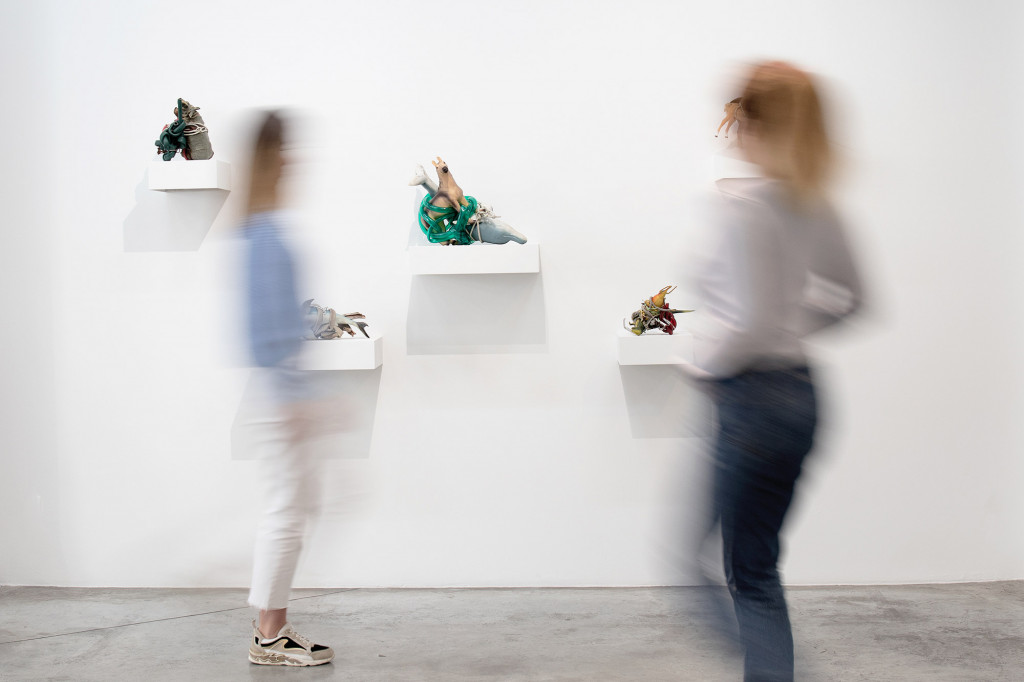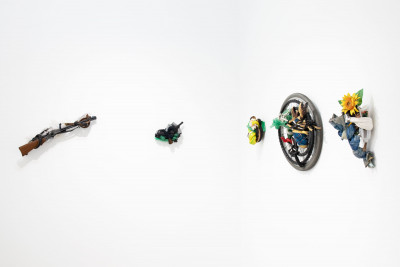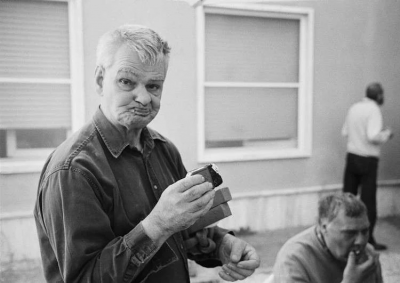Franco Bellucci
as beautiful as … #
5 years after its first exhibition dedicated to Franco Bellucci, the gallery presents as beautiful as… # 2, a new solo show honoring the recently deceased artist. Struck by a significant delay in psychic development, deprived of the ability to speak, Franco Bellucci tirelessly assembled various objects gleaned during his daily walks. This ritual gradually contributed to alleviating his rage and channeling his strength into a creative movement that made him a major figure in Italian art brut, exhibited in particular at the Maison Rouge and the Palais de Tokyo, in Paris and at Galila’s POC. and at the Trinkhall Museum.
If, in Franco Bellucci’s work, the idea of reconstruction – or even that of fixing, so dear Kader Attia – imposes itself in the first place, it cannot suffice once we are familiar with how he made his works. Indeed, how could we not be taken by Bellucci’s immutable ritual, holding the objects that he ties, twists, kneads, bruises and recomposes against his stomach.
If we consider for a moment that the stomach is understood in certain Oriental and Greek philosophies to be the seat of the soul or, at the very least, of the epithumia – desire – we see the amount of vital, primordial energy that could animate these creations. If, in addition, this operation is devoid of all discourse, of all words, but is done at the rhythm of a guttural scansion, of the hoarse breath of Bellucci, one cannot help but draw a parallel with certain shamanistic rituals.
Contrary to Judith Scott, a spider-like weaver of cocoons intended to hide objects, or Pascal Tassini, exploring the proliferating possibilities of knots, Franco Belluci reveals, sublimes, and resuscitates. By creating chimera, he metaphorizes his battle against fragmentation all the while giving his objects an absolute power of recreation. “As beautiful as the unexpected encounter, on a dissection table, of a sewing machine and an umbrella” (Count of Lautréamont, The Songs of Maldoror).
Bellucci attended the Blu Cammello workshop in Livorno, where he was brought to light by the artist Riccardo Bargellini. His hybrid sculptures, born from the assemblage of eclectic objects, form a mysterious language where destinies intertwine and echo one another, seen through the lens of transition, fetishism, or the apotropaic.
His works, part of the collections of the Musée National d’Art Moderne (Pompidou) and the Museum für Moderne Kunst in Frankfurt, have been showcased in numerous major exhibitions, notably at the Palais de Tokyo in Paris.
“These works are endowed with a symbolic power that many ‘professional’ artists are incapable of achieving. “(P. Dagen, Le Monde)

Preface : Gustavo Giacosa
Foreword : Christian Berst
Catalog published to mark the exhibition Franco Bellucci : beau comme…, from october 17th to november 28th, 2015.














